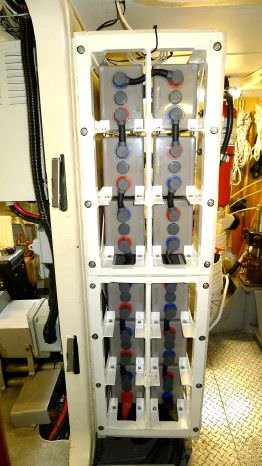North Baltic sea
Guru
Hi,
could anyone figure out exactly what the difference between 4 x 6v vs 2 x 12v house battery bank?
My boat 4 x 6v apparently comes with the 110ah first installing batteries in my NT37 and they will start to turn on condition. Here in Finland 6v batteries are very rare, but it is possible to order. 12V batteries are easy to find anywhere.
Therefore I ask for a difference if each bank 4x6v 110Ah or 2 x 12v 220 ah, what is the difference between these two?
Electricity is a bit mystic to me
NBS
P.S Sorry for all, this has certainly been discussed earlier, such as anchors, so I hope the simplest answer to my question
could anyone figure out exactly what the difference between 4 x 6v vs 2 x 12v house battery bank?
My boat 4 x 6v apparently comes with the 110ah first installing batteries in my NT37 and they will start to turn on condition. Here in Finland 6v batteries are very rare, but it is possible to order. 12V batteries are easy to find anywhere.
Therefore I ask for a difference if each bank 4x6v 110Ah or 2 x 12v 220 ah, what is the difference between these two?
Electricity is a bit mystic to me

NBS
P.S Sorry for all, this has certainly been discussed earlier, such as anchors, so I hope the simplest answer to my question





